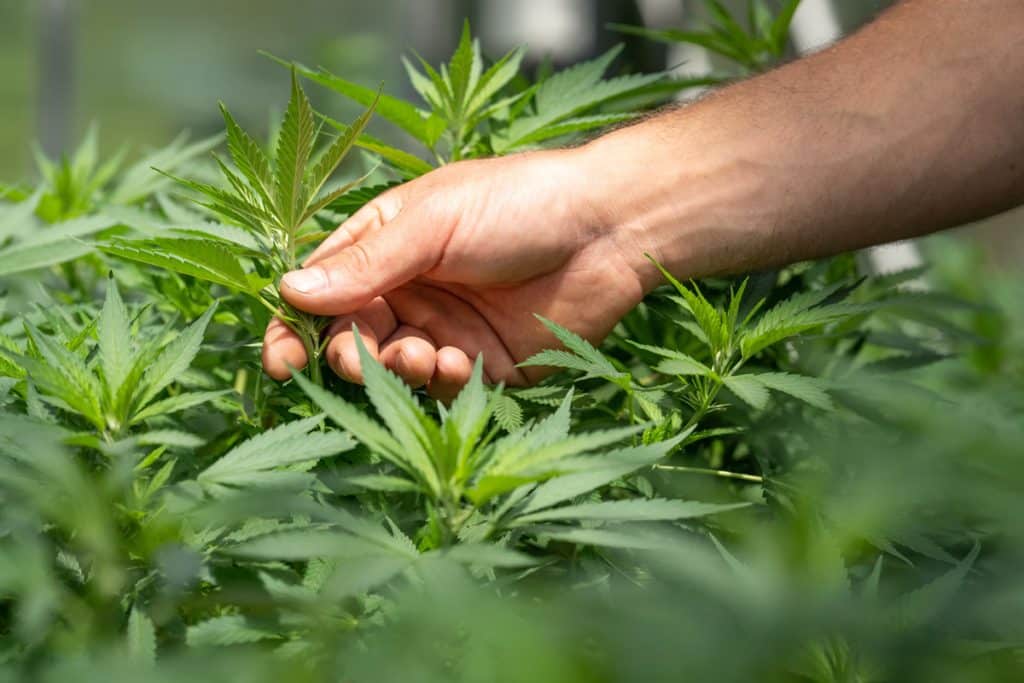What is the endocannabinoid system

Today, the functions and influences of the various biological systems in our body are already of great interest to more and more people. Well, one such recent discovery in the field of physiology is the endocannabinoid system, a regulator that plays an important role in maintaining the balance of our body. If you haven’t come across this term before, in this article we’ll take a closer look at the endocannabinoid system, how it works and the impact of some interesting compounds such as CBD and THC, endocannabinoids and the like.
Endocannabinoid system
The endocannabinoid system, which is also known as the ECS (endocannabinoid system), is not just a simple system, but rather a complex grouping of receptors, endocannabinoids and enzymes. It is found throughout the body, from the central nervous system to peripheral tissues. Its main role is to maintain balance and allow proper functioning of all organs and systems.
The endocannabinoid system in our body plays a very important role in various physiological processes such as the regulation of mood, sleep, appetite, memory and immunity. In addition, this system also has a significant impact on protecting the brain and nerve cells from stress and injury.
Some history of the endocannabinoid system
The endocannabinoid system (ECS) was discovered in the second half of the 20th century, thanks to the work of researcher Raphael Mechoulam and his team. The whole process of discovery began in the 1960s.
The first step towards the discovery of the endocannabinoid system was the isolation of the first endocannabinoid – anandamide. Mechoulam and his colleagues isolated this compound from rat brain tissue. This discovery had already been made in 1964. Twenty-eight years later, in 1992, another important component of the endocannabinoid system was identified, the endocannabinoid 2-AG, the so-called 2-arachidonoylglycerol.
Before the discovery of the endocannabinoid system, a natural substance from cannabis, marijuana, was known to contain a psychoactive substance known by the common name THC. THC was already known to affect the central nervous system and to produce psychoactive effects. It was in an attempt to understand how THC works in the body that Mechoulam conducted his research.
Initial investigations into THC led to the isolation of anandamide and later 2-AG, which are endogenously produced substances in the body and act on the same receptors as THC. It was this that opened the way to the discovery of the endocannabinoid system, a complex system.
Endocannabinoids
Endocannabinoids are a group of endogenous compounds that form a key part of the endocannabinoid system (ECS) in our human body. This complex biological system has a significant impact on the regulation of various physiological processes and the maintenance of homeostasis in the body. Endocannabinoids are synthesized naturally in the body and function as signaling molecules that bind to specific receptors, particularly CB1 and CB2 receptors.
How the endocannabinoid system works
As we have already mentioned, in order to function, the endocannabinoid system needs 3 basic components, which we have also already briefly mentioned. These components include – Endocannabinoids, endocannabinoid receptors a enzymes.
The most well-known endocannabinoids in our body include – anandamide and 2-arachidonoylglycerol (2-AG). These substances are synthesized in the body in response to various stimuli such as stress, pain or inflammation. Their main purpose is to maintain homeostasis, which means maintaining balance in various bodily functions.
Endocannabinoids subsequently act through interaction with the two main types of endocannabinoid receptors – CB1 and CB2. The CB1 receptor is found predominantly in our central nervous system, while the CB2 receptor is found mainly in the immune system and in the tissues of the peripheral nervous system.
- CB1 – the activation of these receptors affects various functions in our body, such as mood, memory, movement coordination and pain perception. CB1 receptors are often associated with the psychoactive effects of cannabis and are concentrated in areas of the brain.
- CB2 – are responsible for regulating inflammatory responses and immunity. Activation of CB2 receptors may have anti-inflammatory effects and is associated with protecting the body from pathogens and promoting healing processes.
Enzymes in the endocannabinoid system also play a key role. This is mainly in the regulation of endocannabinoid levels in the body. Enzymes are responsible for the synthesis, release and breakdown of endocannabinoids, and this is an important process in maintaining homeostasis in the body. The two most well-known enzymes are – amide hydrolase (FAAH) and monoacylglycerol lipase (MAGL).
- amide hydrolase – its role is to break down anandamide into simple components, thus preventing its excessive action on cannabinoid receptors.
- Monoacylglycerol lipase – plays a role in the breakdown of 2-arachidonoylglycerol (2-AG), another important endocannabinoid. The activity of this enzyme ensures that 2-AG levels remain in equilibrium. By remaining in equilibrium, the regulation of various physiological functions is maintained.
Effect of CBD on the endocannabinoid system
CBD, one of the many cannabinoids found in the cannabis plant (Cannabis sativa), which has no psychoactive effects. If you’d like to learn more about CBD itself, in our blog article What is cannabidiol (CBD) and what are its effects? to learn more about it.
But what effect does CBD have on the endocannabinoid system? CBD does not bind to CB1 and CB2 receptors in the way that THC does, but it does act on them. CBD works in a more sensitive way. It acts as a negative modulator, by which we mean that it reduces the activities of CB1 and CB2 receptors, thereby affecting their sensitivity to endogenous cannabinoids. CBD also interacts to increase the levels of endocannabinoids in the body. Thanks to these elements and actions, you can, when taking CBD oils or general CBD use rather therapeutic effects. A number of therapeutic effects of CBD on the human body are currently known, including analgesic, antioxidant, anxiolytic, anti-inflammatory properties, and it is a very common nutritional supplement for a variety of nervous system diseases, depression, and other ailments.
THC vs Endocannabinoid system
THC is known to be psychoactive. THC acts directly on the endocannabinoid system, which is a key regulator of homeostasis in the body. Its structure is similar to the endogenous cannabinoids that the body produces itself, which allows THC to bind to the endocannabinoid receptors CB1 and CB2. However, it is the CB1 receptors, which are the ones most present in our brains, that THC interacts with the most. And here we get perhaps the most obvious answer as to why THC actually affects our mental and cognitive functions. Thus, this interaction of THC with CB1 causes changes in the release of neurotransmitters. This leads to psychoactive effects such as euphoria, perceptual changes, and other psychotropic reactions.
Because of its effect on the endocannabinoid system, THC also has therapeutic effects on humans, but on the other hand it also poses certain risks and side effects.
THC is used in the treatment of certain conditions such as chronic pain and nausea, such as those that occur with chemotherapy and the like. On the other hand, it also produces side effects such as anxiety, paranoia, memory and coordination disorders, which limits its overall usefulness in medicine. However, THC is classified as an illegal and narcotic substance.
If you are looking for a dietary supplement that has very good health benefits, is legal and has very few side effects, reach for CBD oils which can help you with a number of health problems.
Sources:
- https://www.health.harvard.edu/blog/the-endocannabinoid-system-essential-and-mysterious-202108112569
- https://www.healthline.com/health/endocannabinoid-system#how-it-works
- https://www.medicalnewstoday.com/articles/endocannabinoid#summary
Products in the article
-
Product on saleCBG oil 5% full spectrum31,84 €
32,00 € -
Product on saleCBD oil 5% full spectrum28,86 €
29,00 € -
Product on saleCBD oil 10 % full spectrum – premium45,77 €
46,00 €





